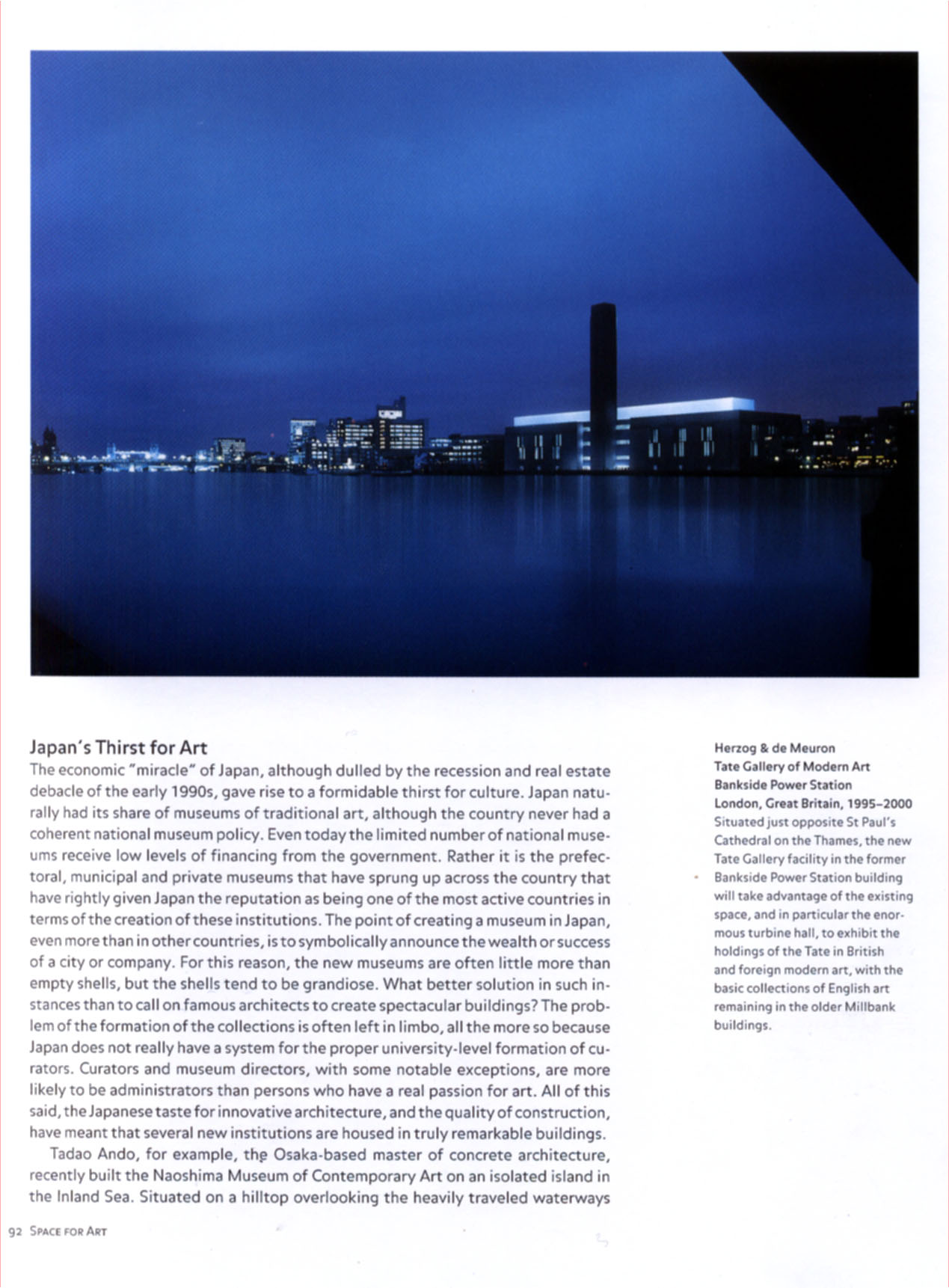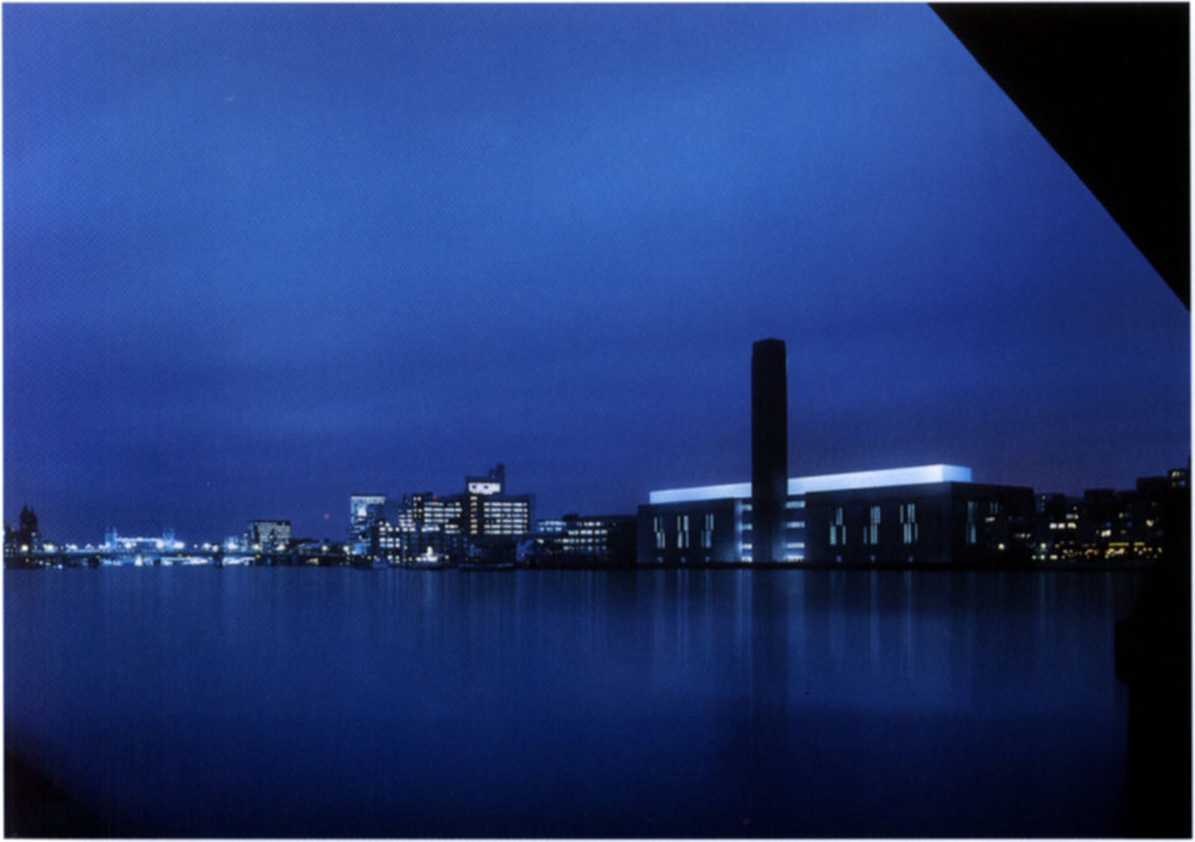60530 New Forms Taschen 086


JaparTs Thirst for Art
The economic 'miracle' of Japan. although dulled by the recession and real estate debacie of the early 1990s, gave rise to a formidable thirst for culture. Japan natu-rally had its share of museums of traditional art, although the country never had a coherent national museum policy. Even today the limited number of national museums receive Iow levels of financing from the government. Rather it is the prefec-toral, municipal and private museums that have sprung up across the country that have rightly given Japan the reputation as being one of the most active countries in terms of the creation of these institutions. The point of creating a museum in Japan, even morę than in other countries, is to symbolically announce the wealth or success of a city or company. For this reason, the new museums are often little morę than empty shells, but the shells tend to be grandiose. What better solution in such in-stances than to cali on famous architects to create spectacular buildings? The problem of the formation of the collections is often left in limbo, all the morę so because Japan does not really have a system for the proper university-level formation of cu-rators. Curators and museum directors, with some notable exceptions, are morę likely to be administrators than persons who have a real passion for art. All of this said, the Japanese taste for innovative architecture, and the quality of construttion, have meant that several new institutions are housed in truły remarkable buildings.
Tadao Ando, for example, thp Osaka-based master of concrete architecture, recently built the Naoshima Museum of Contemporary Art on an isolated island in the Inland Sea. Situated on a hilltop overlooking the heavily traveled waterways
g2 SwtcfroRAeT
Herzog & de Meuron Tatę Gallery of Modem Art Bankside Power Station London, Great Britain, 1995-2000
Situated just opposite St Pauls Cathcdral on the Thames, the new Tatę Gallery facility in the former Bankside Power Station buildirtg will take advantage of the existmg space. and in particular the enor-mous turbinę hall, to exhibit the holdings of the Tatę in British and foreign modern art, with the basie collections of English art remaining in the older Millbank buildings.
Wyszukiwarka
Podobne podstrony:
New Forms Taschen 049 Pages54/SS Renzo Piano Kansai International Airport Osaka. Japan, 1988-95 Buil
59793 New Forms Taschen 175 Ptgn 186/187 Shin Takamatsu Kirin Płaza Osaka. Japan, 1985-87 Locat
New Forms Taschen 012 tecture, preferring to explore the new horizons offered by the Computer. As he
88110 New Forms Taschen 041 Pages44/45 Itsuko Hasegawa Sumida Culture Factory Tokyo, Japan
52837 New Forms Taschen 093 Page 101 Mario Botta San Francisco Museum of Modern Art San Fr
33884 New Forms Taschen 193 In a very different style, the sculptural appearance of Josh Schweitzer
New Forms Taschen 005 IntroductionNew GeometriesSetting the Scene: From Post-Modernism to Deconstruc
New Forms Taschen 055 by the Spanish engineer Santiago Calatrava for the Lyon-Satolas station, where
New Forms Taschen 066 $tcven Holi Storcfront for Art and Architecture New York, New York,
więcej podobnych podstron